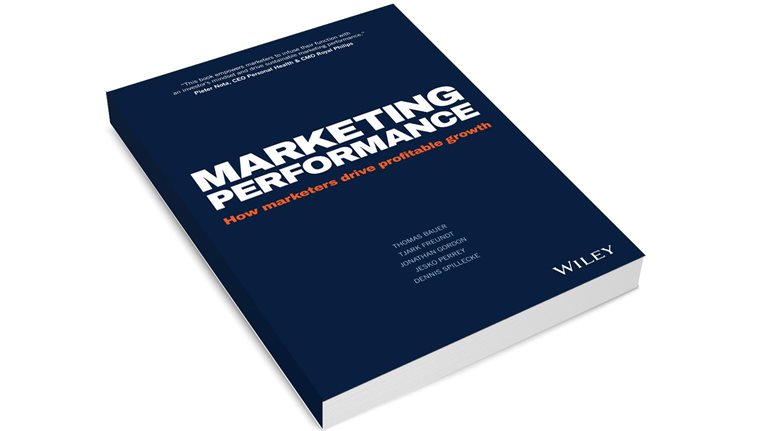Recent research indicates that nearly 70 percent of consumer purchases are driven by initial consideration, a profound insight with significant implications for how businesses drive growth. Bo Finneman, a McKinsey associate partner in Miami who advises clients on growth topics, speaks about how a new metric—the Customer Growth Indicator—can help marketers and business leaders make better marketing decisions. He also explores strategies for beating the competition in the contest for initial consumer consideration.
Stay current on your favorite topics
Winning the initial consideration battle for consumers
After researching more than 125,000 consumers across 30 categories, we found that 90 percent of categories are shopping-driven, which means that loyalty is more elusive today than we thought. Within the shopping categories, we found that the most important battleground—nearly 70 percent of purchase—is the initial consideration set.
As we developed that further, we learned that a metric we call the Customer Growth Indicator (CGI) is highly predictive of growth. When you know your CGI score, you’re able to see how you perform against competitors.
Your brands that are doing quite well and hit 200 or more on the indicator score may be areas where you decide to double down. You can actually look at ways to accelerate what you’re doing from a marketing, product development, and experience perspective.
For those in the mid tier—scoring between 100 and 200—you should probably think about their budget allocation to make sure they’re spending appropriately to stimulate consideration without overinvesting. Brands with a score lower than 100 really need to sharpen their insights around what will drive consumers to consider and ultimately purchase them.
The CGI score explained
The CGI score is a metric based on two core inputs. The first is the initial consideration score for the brand, while the second is the current market share for that brand. Dividing the initial consideration score by market share creates the Customer Growth Indicator score.
The nice part about this metric is that in the course of consumer-decision-journey work, you’re able to create a score for your brand while gaining a clear view across the entire competitive playing field to understand how you stack up against competitors. That, in turn, lets you see how much demand you’re likely to stimulate versus competing brands.
Although it may be a relatively simple measure to track over time, we’ve been pleased to find that the CGI score is highly predictive and accurate, both in terms of understanding past growth performance and future potential.
The Customer Growth Indicator is also a very interesting mechanism when thinking about investments in the private equity world. Given the fact that it’s predictive of demand stimulation and provides a forward-looking view, it’s a great way for investment companies to examine different brands in the market and identify those well-positioned to achieve future growth.
Example: Using the Customer Growth Indicator
The CGI can be quite powerful in the travel category. In one example, a client had two brands on opposite ends of the spectrum, one with a strong CGI score and another that was lagging behind the competitors.
In the case of the brand with a strong score, the focus was, “How do we double down and accelerate growth? What can we do in terms of spend on that brand? How do we put in more capital investment so that the fleet grows? And what new markets and pockets—whether they’re itineraries or otherwise—can we start to go after to really begin to scale the brand even further?”
On the other side, the realization that the CGI score showed a lack of demand stimulation or a lack of demand potential was quite useful. It really focused the client on getting back to the roots of what the brand was doing well, and recognizing some core strategic decisions around investing in the asset to give consumers more of what they wanted.
Would you like to learn more about our Marketing and Sales Practice?
The low Customer Growth Indicator got the client thinking about new campaigns they could launch to drive consideration through celebrity endorsements and PR. It also led to a rethinking of pricing and promotional strategy to stimulate the right customers with the best experience and deliver good value.
How to boost a customer’s initial consideration of a brand
When you think about growing the initial consideration set, it’s actually not as simple as thinking about television or another channel that you might believe drives growth. We actually find that it’s multidimensional.
Past experience is utterly decisive. We know that one of the biggest drivers of initial consideration is a consumer’s past experience with a brand. This goes back to ensuring that you’re always delivering your best value proposition.
Another key factor is word of mouth, which is based on having a good experience. So whether that next consumer has bought from you before may not be so important if they’ve talked to someone who has.
The final thing is recognizing the most important influencers and specific channels that drive initial consideration. So intermediaries, whether they’re agents or otherwise, have to think about how to get ahead of the consumer decision journey. And since brand selection happens most often at initial consideration, it’s important to continue your relationship with those consumers and work with them even before they realize they want to make a purchase.

The new battleground for marketing-led growth
That can come down to simple elements like being part of the local community, going to events, or creating local sponsorships. These particular pieces, which make people feel like you know them personally and are not pursuing a strictly commercial relationship, are actually vital both to driving trust and ultimately driving consideration and influence over what consumers do.
The importance of the initial consideration set and knowing your CGI score, however, do not mean that loyalty is not important. We know that customer experience is an essential factor. In fact, past experience is one of the biggest drivers of success at initial consideration. So delivering the best experience to your customers day in and day out, and ensuring that they believe you’re delivering your value proposition and offer good value is critical for the success of your brand.
Overlooked tactics to acquire new customers
In the process of thinking about the acquisition of new customers, marketers often ask themselves, “How do I drive awareness and initial consideration with those individuals?” We believe there’s a hidden pocket of lapsed consumers who can be retargeted in a meaningful way, since some of them may have left your brand for a specific reason.
They may have become more value conscious and no longer found that your product was priced in a way that delivered value for them. You might think about communicating with them about your new offering, since many brands today have introduced lower-priced options.
Another factor in losing customers may have been a poor service experience. So you could think about going back to them and talking about the investments you’ve made in customer experience. Whatever the reason, it’s about getting specific around the rationale for their leaving the brand and finding a way to re-earn their consideration—and ultimately, their choice.
Even though there’s a multitude of touchpoints, I think it’s more about quality over quantity. It’s about ensuring that you’re not blasting consumers with messages that aren’t compelling. You need to make sure you’re reaching the right consumers with a good propensity to consider your brand and delivering a message that is both new and compelling. The combination of those two typically yields good results.


